
archives for 09/2016
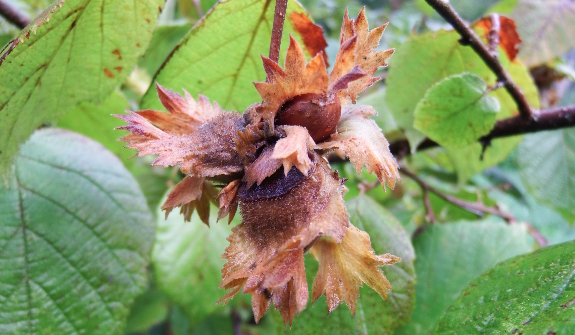
I never realized how
much joy I got out of our homegrown produce...until I stopped being
able to eat anything except scrambled eggs, yogurt, plain brown rice,
and steamed green beans and okra.
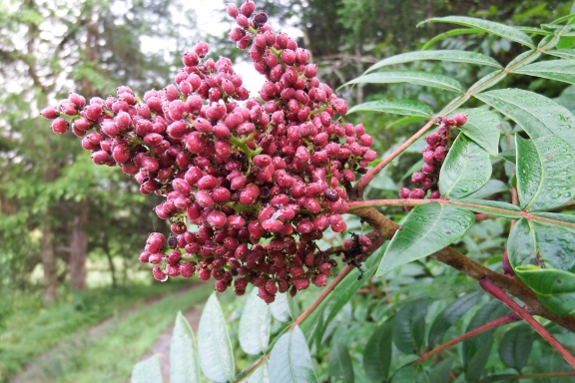
I'll spare you the
bowel-related details, but the short version is that I've been doing
poorly for over a month now. In fact, I even went to the nurse
practitioner twice and have an appointment with a gastroenterologist in
a few weeks.
(Yes, I am aware that I
pulled out the big guns the instant our darling doeling mentioned a
tummy upset and waited 2.5 weeks to treat myself. There's nothing
odd about that...really.)
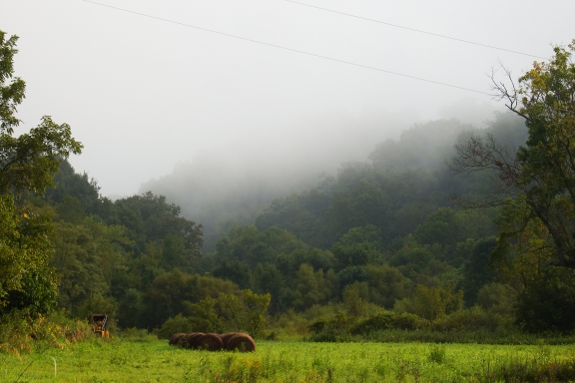
To people who know me in
real life --- I'm sorry if I don't currently have the oomph to fulfill
my usual roles! And to the rest of you --- I appreciate you bearing
with my less interesting posts while I take it easy. Maybe some pretty
pictures will make up for not having anything farm-related to report?
This is the week we pull up
old tomato plants.
Pull up the fence post stakes
and plant a cover crop and we're ready for Winter.
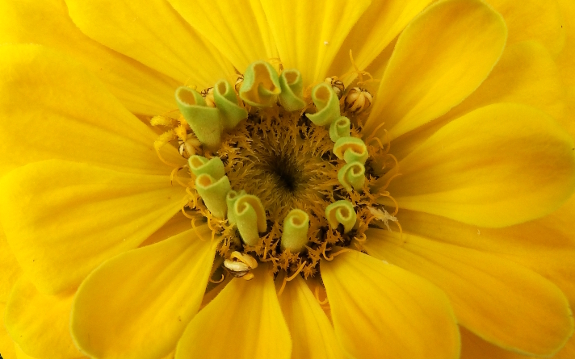
Thank you all so much
for your well wishes and thoughtful replies on yesterday's
post! It means a lot to me to have you on my team and I hope you
know how much I appreciate your support.
A close up view of how the geotextile fabric looks after driving over it.
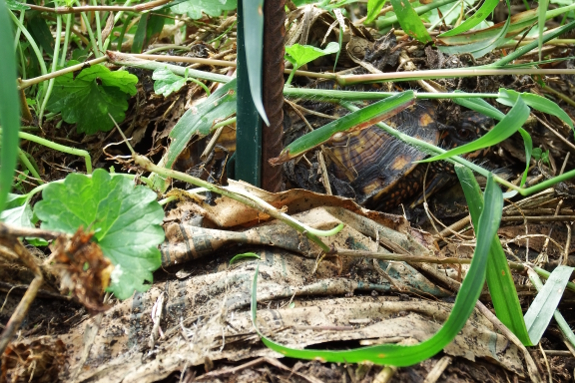
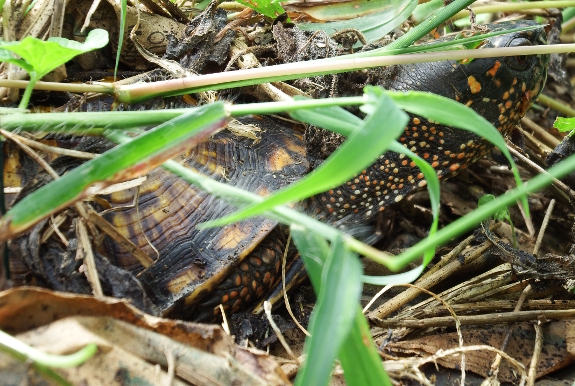
Clemson Spineless Okra is a
big producer for us this time of year.
We either steam them or cut
em up in a pan of olive oil.
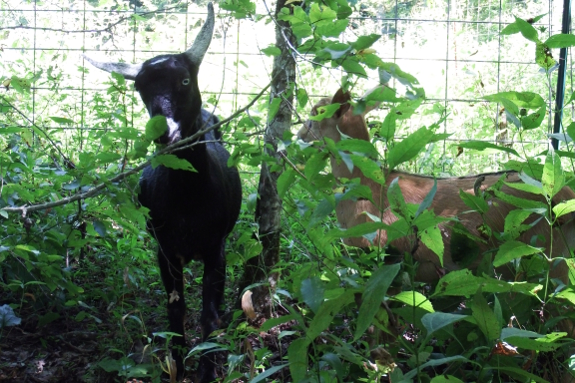
The antibiotics are starting to kick in,
which means more energy for the things I enjoy the most...like taking
out the goats.
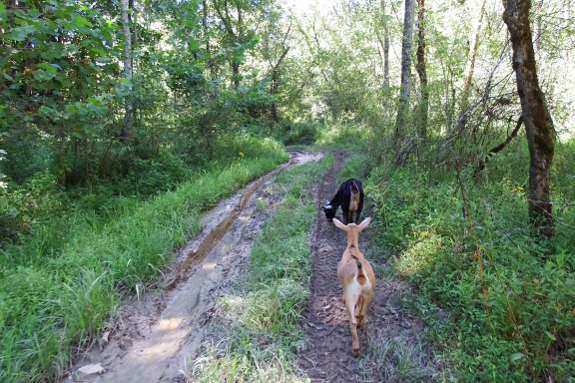
Now that Artemesia's
hooves are back to
normal, she no longer minds walking across damp soil. So we've been
following the Kubota tracks down the floodplain in
search of prime forage.
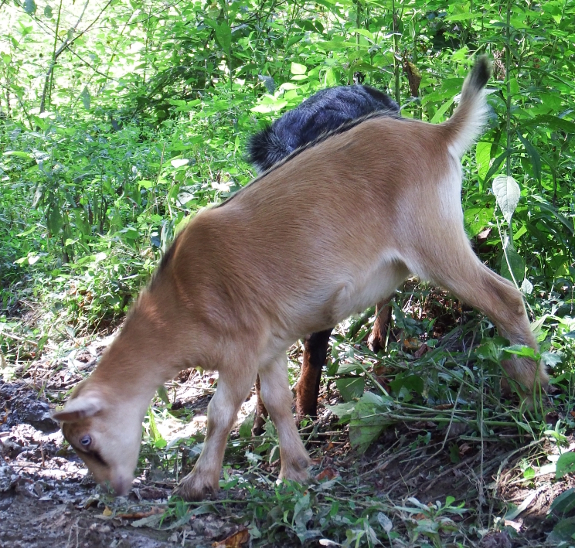
Aurora eats, but fills
up fast. After all, she's still drinking milk twelve hours per day and
isn't in need of much extra sustenance. I keep pondering weaning...then
decide to table the issue for another day.
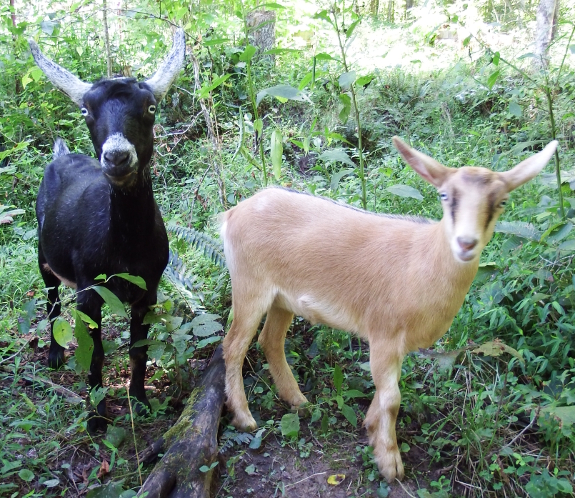
Cooler weather means I
might let the girls stay out for nearly two hours on a Saturday
afternoon. After all, who wants to go home when the sky is blue and the
day is beautiful?
Our new flock of Australorp hens started producing their first eggs yesterday.
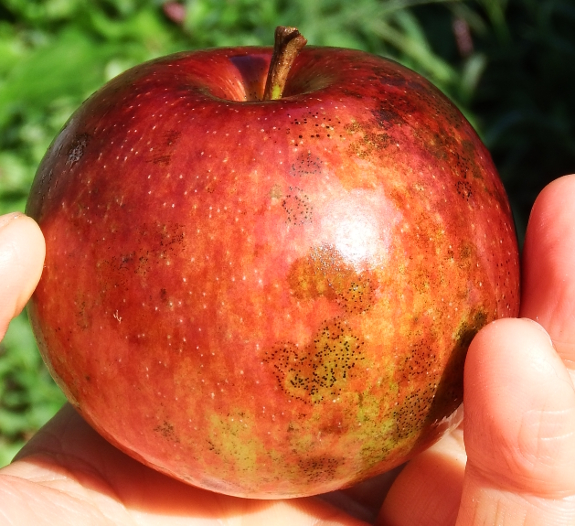
Technically, the only
fruit my stomach can handle easily right now is bananas. But when a few
of our homegrown apples ripened up, I couldn't resist risking a small
sample.

We'd eaten Virginia
Beauties and Enterprise
before, so the new variety being tested this time around was Red
Empire. The sole fruit that ripened on the tree is certainly a beauty
--- brilliantly red and shiny. But how would it taste?
Of the three apples ripe
this week, Mark gave Red Empire two thumbs up and deemed it his
favorite. I preferred the more dense flesh and higher acidity of
Virginia Beauty, but didn't mind the crisp sweetness of Red Empire at
all. Definitely a tasty apple to have in the orchard!
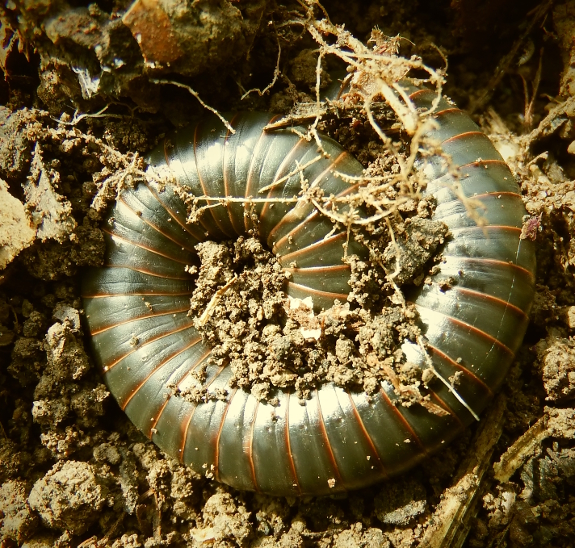
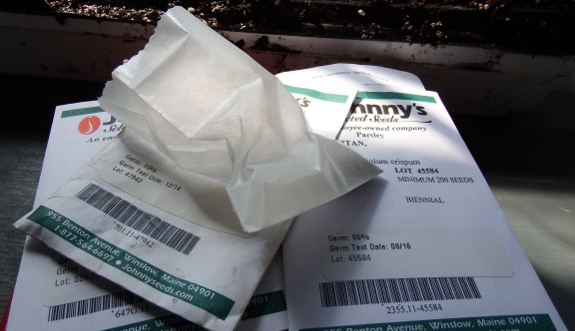
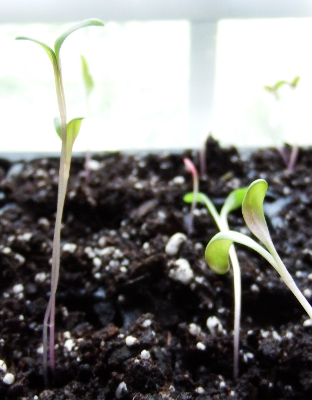 In many ways, I'm putting the
garden to bed early this year. I'm
pulling out a lot of summer crops early, planting oats in their
place to build organic matter while letting the tired gardeners rest.
In many ways, I'm putting the
garden to bed early this year. I'm
pulling out a lot of summer crops early, planting oats in their
place to build organic matter while letting the tired gardeners rest.
And yet...I'm starting
one last flat of seeds. Crawdads ate the roots of most of my parsley
plants this summer and voles did the same to a third of my Swiss chard
crop. A few seedlings started in late August will fill in the gaps and
ensure our winter garden is full of life throughout the long, cold
months ahead.
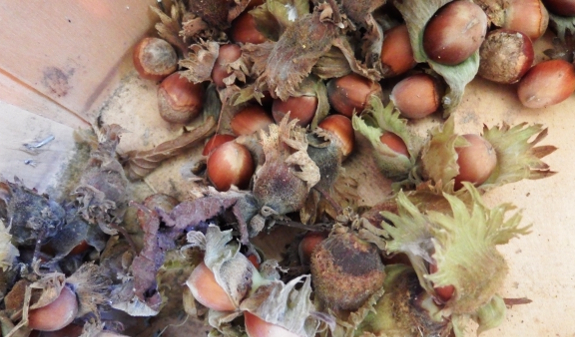
The harvest keeps coming
in, slowly but surely. We're filling our drying porch up with nuts...
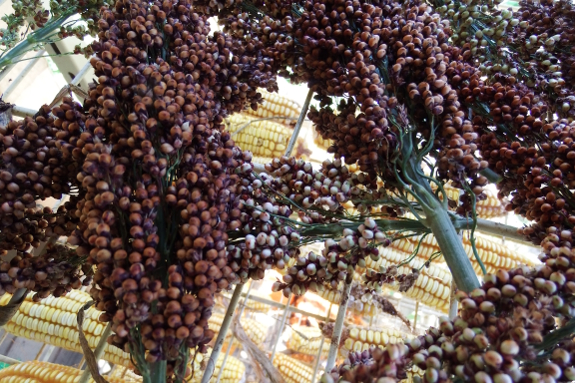
...and grains for the
goats. Next up on the harvest agenda: sweet potatoes and the rest of
the butternut squash.
Today was the day Anna
learned how to shift and drive the Kubota X900.
Sometimes it helps to apply a
little on the gas pedal if the gears feel a little stuck.
Always give the engine at
least 5 minutes to warm up in the morning.
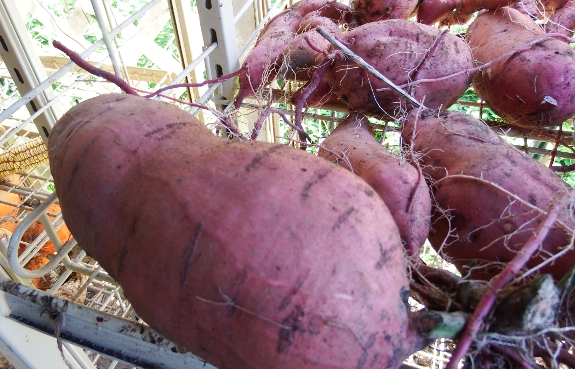
My unruly
tummy is finally coming into line as I bombard it with two types of
antibiotics and two types of probiotics. Adding normal food back into
my diet is still slow going, though...so I'm working on becoming more
American and eating with my eyes.
After my initial angst,
I soon remembered that I get a kick out of hauling humongous sweet
potatoes out of the ground or weeding beside the basil, letting the
herbal aroma waft over my skin as I work. Picking a peck of (unpickled)
peppers and giving half away makes my day because I can imagine beloved
people eating the bright red fruits.
Okay, so yes, I'd rather
savor our garden produce myself. But in the meantime, life is still
good as long as the beauty of fresh vegetables rolls across my eyes and
my skin.
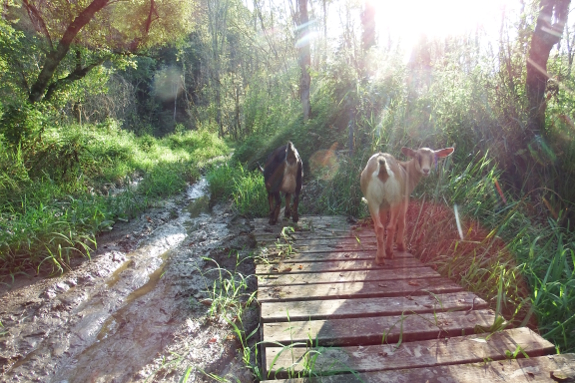
Our
swamp bridge floated downstream a year and a half ago.
Luckily, the structure easily disassembled into two parts, and Mark and
I were just barely able to carry one half back to lead
from goat pastures to floodplain.
The other half, though,
remained resolutely downstream...until Mark and the Kubota did the work
of two people with ease. Yay for a bridge back in the swampiest portion
of my morning walk!
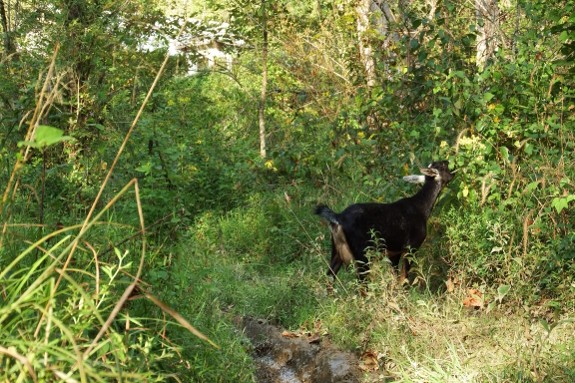
The goats were equally
thrilled at the addition since the bridge opened up a whole new arena
of floodplain to explore. This area is a little bit close to the
garden, though. Can you pick out the end of our trailer in the upper
left side of the photo above?
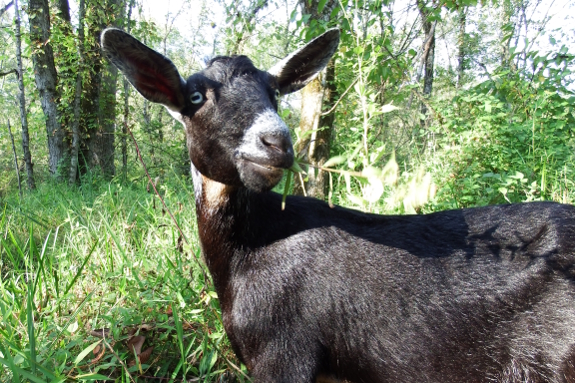
I was never able to
graze the goats in this region tether-free when Abigail
was herd queen, but Artemesia is more malleable. My perfect doe grazed
quite happily in previously taboo ground without ever
making a break for the apple trees. It's such a pleasure to have a herd
of well-trained goats!
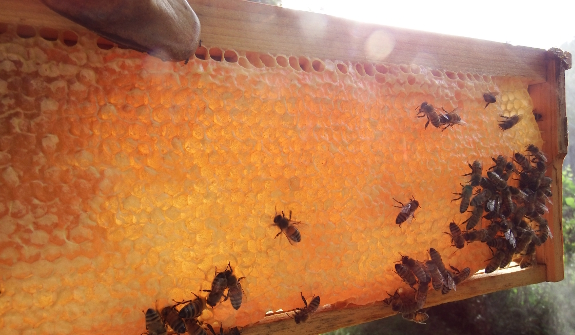
At the beginning of
September I embark on the first of several winterizing-the-hives tasks.
Step one --- check on the honey stores and determine whether we need to
feed.
Here in zone 6
(southwest Virginia), the rule of thumb on honey stores is:
- Langstroth hives should have 50 to 60 pounds of honey (which is equivalent to 7 to 9 deep frames or 14 to 18 shallow frames)
- Warre hives should have about 39 pounds of honey (which is equivalent to 1.5 boxes full)
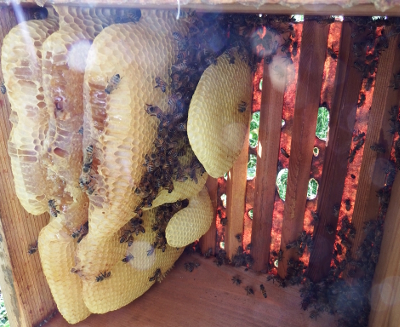 How do our two hives stack up?
How do our two hives stack up?
- Langstroth hive: 23 pounds of honey (6.5 shallow frames)
- Warre hive: 26 pounds of honey (1 full box)
It looks like my
beekeeping mentor was right --- I probably shouldn't have stolen quite
as much of their basswood
honey. That's okay --- I'll top them off with sugar water now while
the weather is still warm enough to evaporate the gooey concoction.
Meanwhile, the copious brood in both boxes will ensure that the bees
are also socking away nectar from the "yellow flowers" (as my mentor
likes to call everything from wingstem to goldenrod). Hopefully by the
end of the month, we'll hit quota.
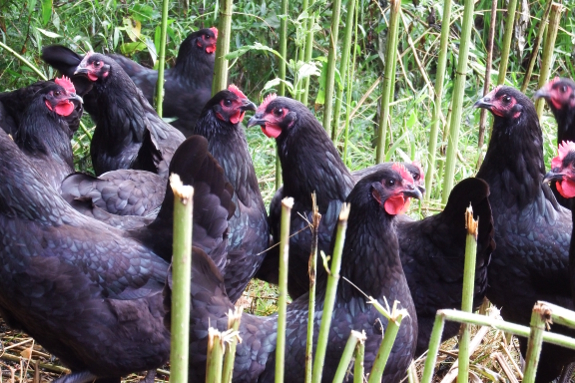
Our new generation of
Australorp layers is turning out to be a difficult flock.
We're debating on ways to
scale it back for easier management.
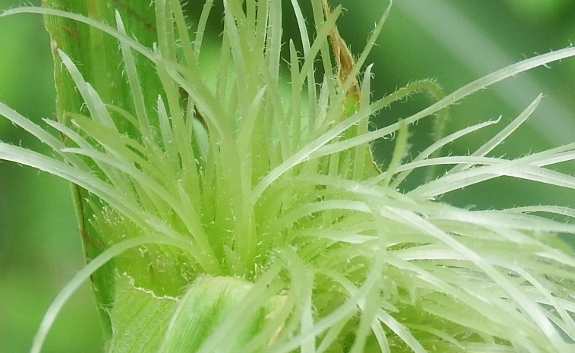
Lunchbox
peppers are the most colorful things we have growing at the moment.
The plants seem resistant to
problem bugs and provide a large yield.
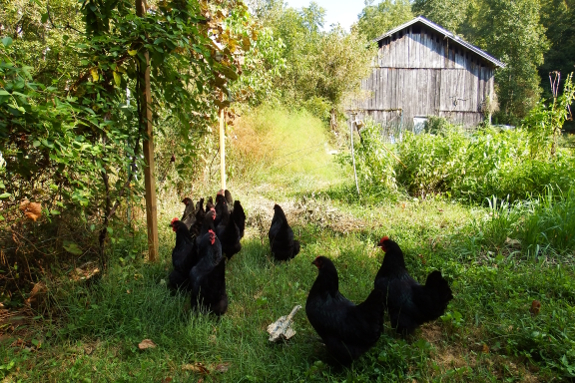
Australorps are our favorites too, and in this case their frequent invasions of the garden are entirely my fault. We had a pesky mixed flock last year full of all kinds of troublesome varieties, and the last three old hens ended up being so bad I stuffed them in with the young Australorps for a week before their freezer day.
Unfortunately, a week was long enough to teach the young flock some of their bad tricks. Plus, the one male chick who came with this set of layers got eaten by a predator early on, leaving the hen party without a reason to stick together. To cut a long story short, our pullets are currently flying fences and seeking out pasture holes with wild abandon.
The stop-gap measure has been to shore up our exterior fences and let the girls run in the woods, where they have plenty to keep them occupied. But Mark's talking about maybe embarking on another round of tractor-building this fall combined with a coop/pasture renovation. We'll see how much oomph we have for long-term solutions as my energy levels slowly return.
Our first day hauling straw
bales with the Kubota.
A whole lot easier than using
the ATV.
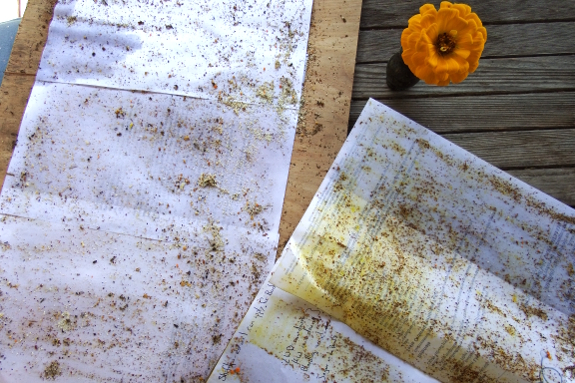
Last week, I wrote about
step
one of winterizing our hives: checking on honey stores and feeding if
necessary. At the
same time I make my early fall hive check, I also move on to part two
of the winterization campaign: testing for varroa mites.
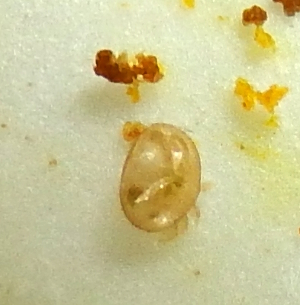 I've written about how
and why to test for varroa mites with a homemade stickyboard here. This time around, our Warre
hive passed with predictably flying colors, dropping an average of only
9.3 mites per day. The bulkier Langstroth hive had quite a few more
mites, clocking in at 31.3 mites per day. (Yes, I do count even
immature specimens like the one shown to the right.)
I've written about how
and why to test for varroa mites with a homemade stickyboard here. This time around, our Warre
hive passed with predictably flying colors, dropping an average of only
9.3 mites per day. The bulkier Langstroth hive had quite a few more
mites, clocking in at 31.3 mites per day. (Yes, I do count even
immature specimens like the one shown to the right.)
In part, the Langstroth
hive's higher mite count is due to the fact there are simply more bees
present in that hive, but the infestation is still a little further
along than I'd prefer. On the other hand, the last time I used
non-chemical treatment for a borderline hive, I really regretted it ---
after being dusted
with powdered sugar,
the bees got so pissed off about the intrustion that they absconded. So
I'm going to try some rhubarb-leaf
anti-mite strips, then test again in a month to see if pest levels
are increasing or decreasing as the bees begin to slim their colony
down in time for winter.

In my last Then
and Now post, I stuck close to home. So I thought I'd regale you
this time with a shot of the barn from 10 years ago and again from this
week.
So many changes in the interim --- a new roof, a Kubota to appreciate
the cover, and several trees cut down or grown larger. I wonder what
this area will look like in 2026?
We harvested about 4 bushel baskets of butternut squash yesterday.
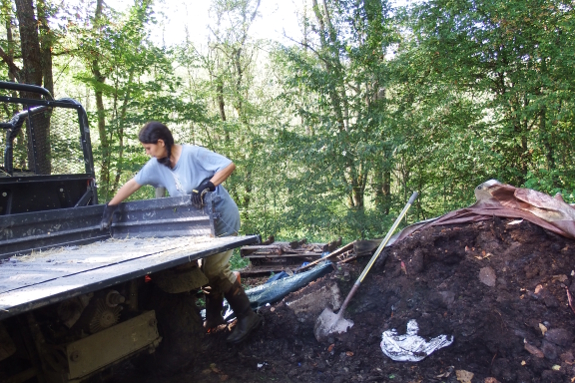
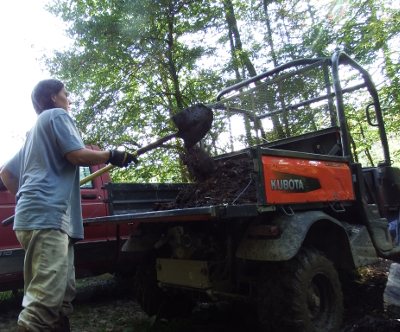 With
one
session of Driver's Ed
under my belt, Mark certified me to take the Kubota out for a solo
adventure. It was pure pleasure to be able to toodle along through the
floodplain without worrying about getting stuck in the mud!
With
one
session of Driver's Ed
under my belt, Mark certified me to take the Kubota out for a solo
adventure. It was pure pleasure to be able to toodle along through the
floodplain without worrying about getting stuck in the mud!
I put a little more
manure in the bed this time around since I don't think my previous trip
got anywhere near the load limit. Three very full wheelbarrow loads was enough to smother a third of the back garden in rich, high-nitrogen fertility.
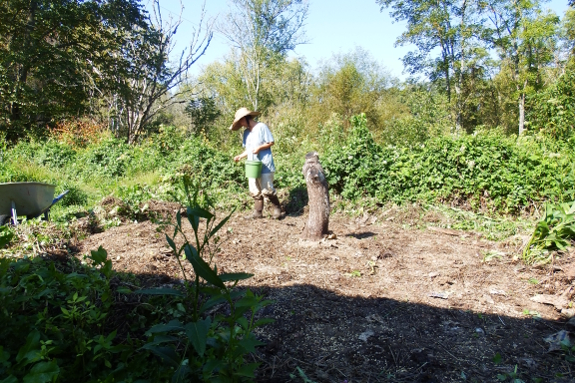
This is the final week
for oat planting in our neck of the woods, so
we're filling up as many garden spots as can easily be turned over to
cover crops. In really poor soil that
didn't produce as well as I would
have liked this summer, I sprinkle the oat seeds over the ground then
top them off with solid coating of composted horse manure. Richer soil
gets less TLC --- just oats covered by a thin layer of straw meant to
hold in moisture and confuse hungry birds.
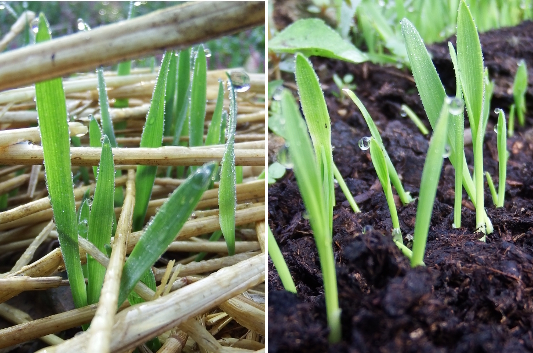
Add a little water and
the seeds sprout fast. The image above shows
oats we planted last week in parched soil, then watered well with our
impact sprinklers.
Given my continued
health issues, I'm not hitting every bed I'd really
want to with oats this year. But that's okay --- rye can be planted
slowly but surely over the next month and a half to produce similar
cover and biomass. The goats don't enjoy grazing rye as much and the
rye beds won't be available for spring and early summer planting, but
the
soil won't mind at all getting to enjoy eight months off covered with
rye.
We noticed a fair amount of
vole damage to the sweet potatoes.
The goats don't seem to mind
and we save the good ones for ourselves.
Maybe the damage would've
been a lot worse without Huckleberry killing the voles he's hunted?
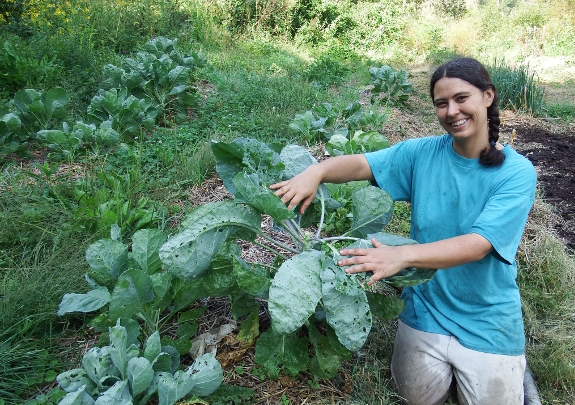
The surviving Brussels sprouts bounced back fast after their row-cover trauma. A few are so big, in fact, that I went ahead and topped them to prompt sprout-formation. Looks like we'll have a good crop this year after all
It seems the tape repair I did this Summer could not hold up to Anna yanking the hose so she could relocate a sprinkler station.
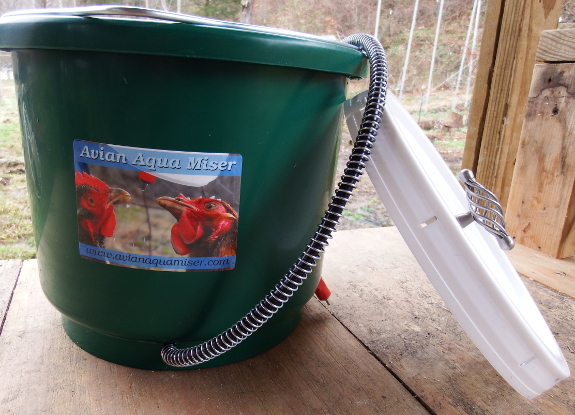
It's that time of year
again. The weather is cooling. The lights are on in the chicken coop.
In other words --- it's time to think about winter watering chores!
Once again, we have a
very limited run of premade heated bucket waterers available. Mark
snags these buckets during his annual winter trip to Ohio so we won't
have to pay shipping twice, making it cost-effective to install two
nipples in the bottom and send them out for a hundred bucks with free
shipping. In other words --- there may be another run in
December/January, but otherwise this is all we'll be selling for the
year.
Here are the stats:
- 2 gallon volume with two nipples (sufficient for 34 chickens for at least two winter days).
- Nipples keep flowing down to the low teens Fahrenheit and water
in the main reservoir stays thawed much longer.
- Comes with a lid with a knob for easy removal. (Your unique knob may or may not look like the one in the picture.) In addition, brackets within the bucket prevent your lid from falling in.
- Free shipping within the U.S. (We can't ship these out of the
country at all --- sorry!). Your waterer should arrive sometime next
week.
- Cost: $100
 Don't want to buy (or aren't
fast enough and we've already run out)? No worries! You
can make your own heated bucket waterer using the instructions here. No matter how you get
there, though, you'll want to be prepared. Your winter flock needs to
stay hydrated if you want to keep raking in those delicious, homegrown
eggs.
Don't want to buy (or aren't
fast enough and we've already run out)? No worries! You
can make your own heated bucket waterer using the instructions here. No matter how you get
there, though, you'll want to be prepared. Your winter flock needs to
stay hydrated if you want to keep raking in those delicious, homegrown
eggs.We had our first Bigfoot
sighting while visiting Sawdust Mountain recently.
They cut up big trees with a
large saw and one of the workers was sculpting an impressive likeness
of Sasquatch out of a large stub of a tree.
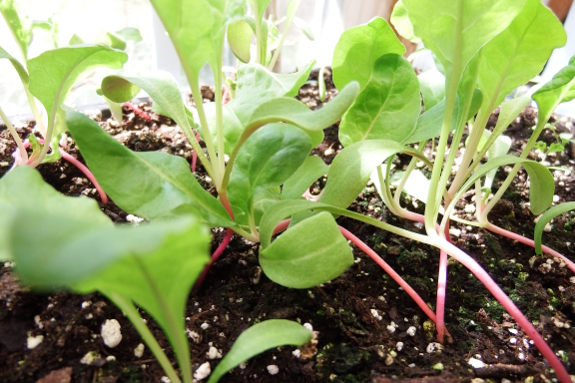
Our last
round of fall seedlings is ready to put into the ground. Swiss
chard sure is easier to thin when started in a flat indoors where I can
nip off excess seedlings while talking on the phone.
 I've had several concerned
emails/calls from family and friends lately, so I thought I should give
a brief followup about my grumpy gut.
I've had several concerned
emails/calls from family and friends lately, so I thought I should give
a brief followup about my grumpy gut.
The short version ---
it's still grumpy. I'm mostly managing to keep diarrhea to a minimum
with a (not-quite-so-severely) restricted diet. Meanwhile, I have an
appointment with a specialist at the end of the month that I hope will
determine the root cause and start me on the path toward healing.
While we wait, Mark has
put me on half duty, which keeps me cheerful and prevents exhaustion
from eating me alive. During the freed-up time, I've been spending more
hours with the goats and have also taken up coloring books. I would
have laughed at such structured art years ago, but my writing time uses
up all of my creative juices and being able to simply play with colors
within an established framework is awfully restful and fun.
Thank you all for your
kind wishes!

As we near the autumnal
equinox, the light is subtly shifting.
The latest batch of heated chicken waterers will have a nice blue ceramic knob.

There's something about
the autumnal equinox that makes me want to tunnel into the earth.
Without realizing it, we repeated our Bristol
Caverns visit on
nearly the same date as last year. Does that make it a tradition?
The dump bed on the Kubota X900 is a good height for easy wheelbarrow loading.
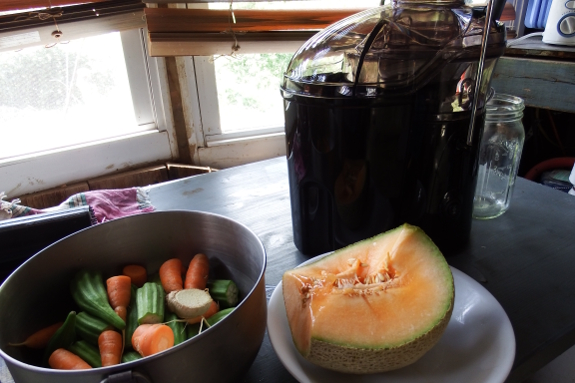
I've decided to treat my
funky tummy as a science-fair project. Here's the summary so far, with
technical terms purposefully left out.
Hypothesis 1: Bad bugs
took over my gut.
- Experimental protocol: A week of heavy-duty antibiotics followed
by a bug-friendly diet heavy in probiotics and bland carbs (brown rice,
steamed vegetables, bananas) combined with daily fiber pills.
- Results: After a bit of initial improvement, tummy still funky.
- Conclusion: Bugs are not the issue or are not the only issue.
- Note for further study: When I'm off farm and don't take along a
fiber pill, I seem to have my best days.
Hypothesis 2: Inflamed
gut never gets a chance to heal because I keep stuffing irritating,
high-fiber food down my gullet.
- Experimental protocol: Low-fiber diet of foods that haven't inflamed my gut in the past (hard-boiled eggs, yogurt, bananas, low-fat hotdogs, chicken breast, tuna) in small meals for breakfast through mid afternoon, then juiced fruits and vegetables for supper to give my gut an extended relaxation period. Imodium as needed to slow things down.
- Results: I'm only two days in, but early signs are very positive.
By the way, I continue
to appreciate everyone's kind words and good energy! Hopefully I'll be
back to having fun homesteading information to report in the near
future.
Planting and mulching 96 garlic bulbs while the morning shade is still in tact.
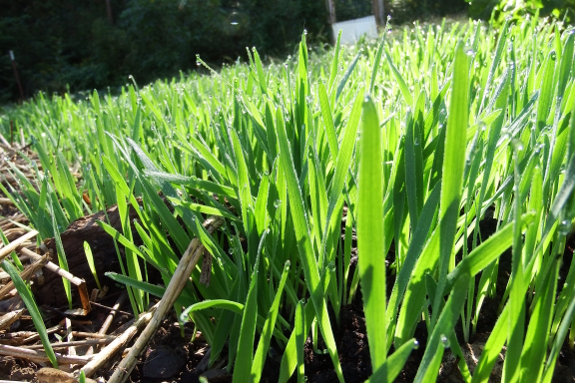
We got really lucky,
with the only significant rain of the last month falling the weekend
after my big oat-planting
push. Thanks to the wild moisture, the cover crops are up and
growing this week, their beds already a nearly complete sea of green.
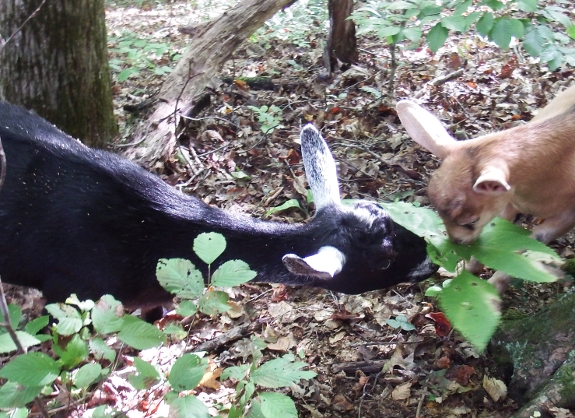
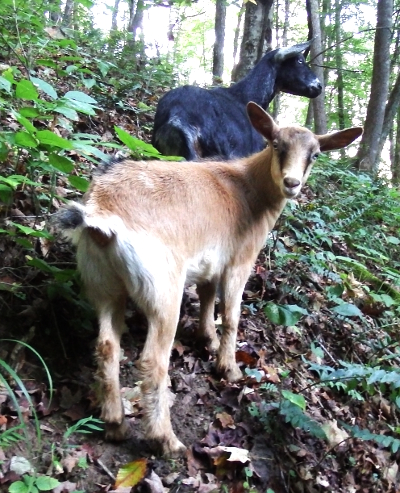 About a week and a half ago,
Artemesia finally decided it was time to wean us. I say "us" because
she not only stopped letting Aurora drink endlessly at the milk bar,
she also started stamping uncomfortably as I milked her in the morning.
About a week and a half ago,
Artemesia finally decided it was time to wean us. I say "us" because
she not only stopped letting Aurora drink endlessly at the milk bar,
she also started stamping uncomfortably as I milked her in the morning.
I could easily have
pushed through the minor grumpiness, but I figured Artemesia had
already done a pretty awesome job as a first freshener. We've enjoyed
17.5 gallons of her milk and her kids have probably gotten twice that
much. Time to let her rest for a while so she'll be back in good shape
for her Halloweenish breeding.
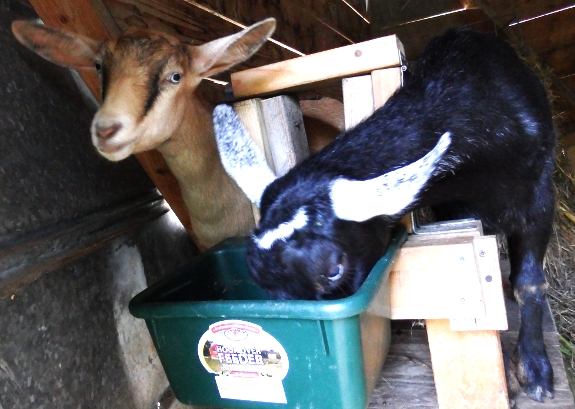
So far, Aurora is
thrilled at my
decision to dry Artemesia off. I started the attempt nearly a week
ago, but I'm pretty sure our doe is still making just as much
milk...only her daughter's getting to drink it all instead of sharing
with us humans. Hmmm.... Maybe I need to rethink my dry-down plan.
These cinder blocks will now absorb the bulk of the weight for our front porch steps.
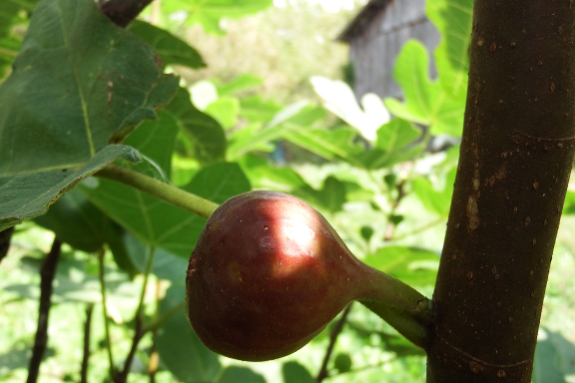
Despite being nearly
killed back to the ground again last winter, this has
been an excellent year for figs. Hot and dry seems to hit the spot for
this ancient fruit.
On that note, did you
know that figs might be one of the first plants domesticated by man?
Archaeologists have found sterile figs dating as far back as 9000 BC,
up to a thousand years before the first known cultivation of wheat and
rye. Something to think about when you sink your teeth into the next
sweet morsel....
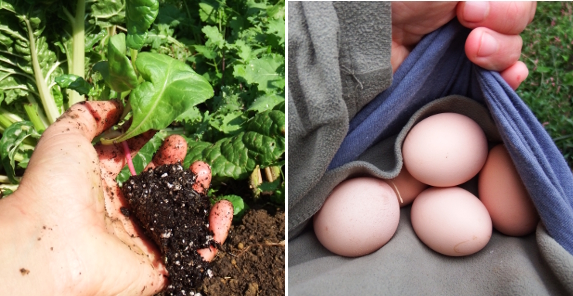
The barred owls have
been calling and the ruffed grouse have been pounding for the last
week. Both are confused by the equal-length days and nights, triggered
into spring behaviors for a limited time.
I haven't been tricked
by the equinox, but I still find myself thinking of spring around the
homestead lately. It's long-sleeved shirt weather in the morning when I
gather copious pullet eggs, and I'm even setting out seedlings into the
garden. Only in this case, the seedlings are filling in gaps in the
winter-greens row, ensuring we have enough Swiss
chard and parsley to make it through the long winter ahead.
An upcoming film project
requires a gold chain with a medallion.
The chain was 3 dollars and a
small hole drilled in a gold button made for an acceptable medallion as
long as the button face is facing forward.
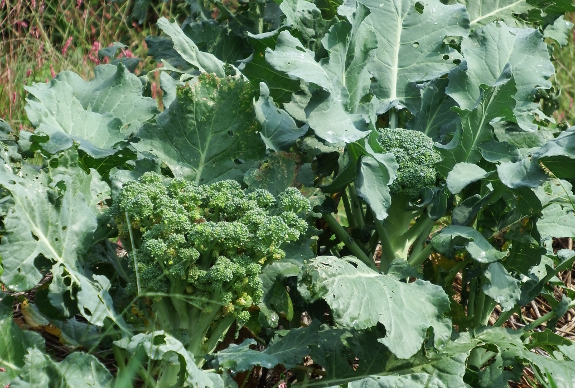
We've had a great crop
of both spring and fall broccoli this year, and a lot of each has ended
up in the freezer. In fact, there have been so many heads, I've let a
few get away from me --- the one on the left in the photo above really
should have been picked three days ago. Good thing we have
crucifer-loving goats who are glad to chew up any florets that are no
longer perfect enough for human consumption.
Chickens in the garden did some damage to our kale, but 98% of it bounced back.
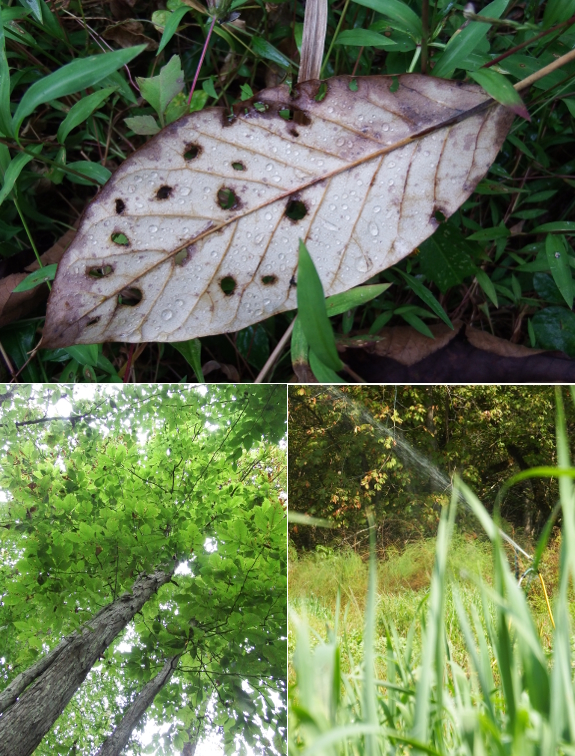
The world changes on a
dime at this time of year. Monday, it was so hot and dry that I turned
on the sprinklers. Thursday, I wore a fleece all day long, slipping out
between raindrops to tempt the goats with fallen leaves.
Usually I fight fall,
eking out every ounce of summer I can muster from the garden. This
year, I've been forcing myself to rest for weeks on end and am content
to watch the seasons change as they will. I'm left to wonder --- will I
be able to remember when I'm back at full strength that human trials
and joys are just as fleeting as mountain weather?
Our furring strip handrail only lasted 4.5 years before breaking yesterday.
Want more in-depth information? Browse through our books.
Or explore more posts by date or by subject.
About us: Anna Hess and Mark Hamilton spent over a decade living self-sufficiently in the mountains of Virginia before moving north to start over from scratch in the foothills of Ohio. They've experimented with permaculture, no-till gardening, trailersteading, home-based microbusinesses and much more, writing about their adventures in both blogs and books.
